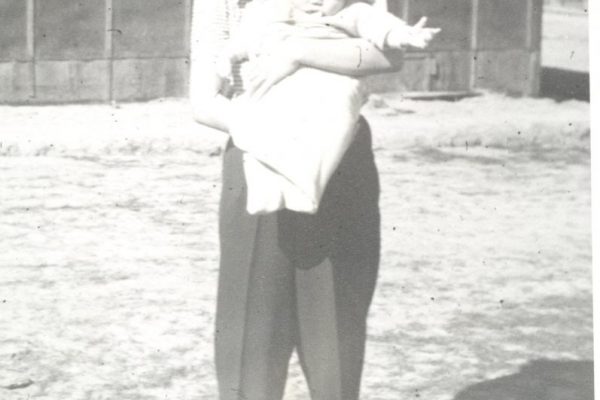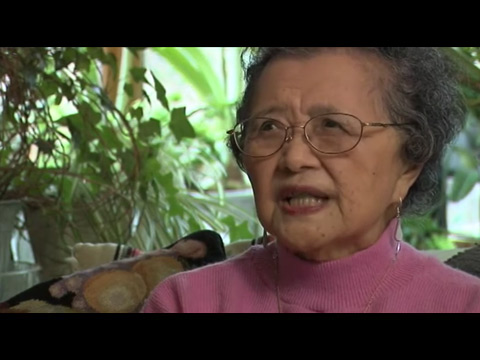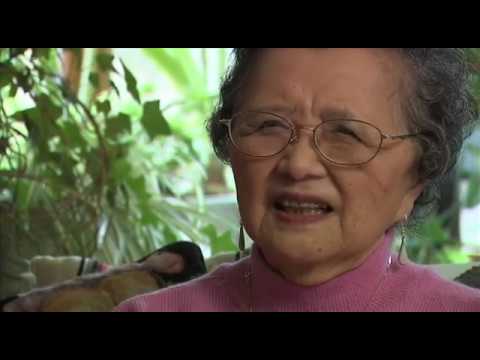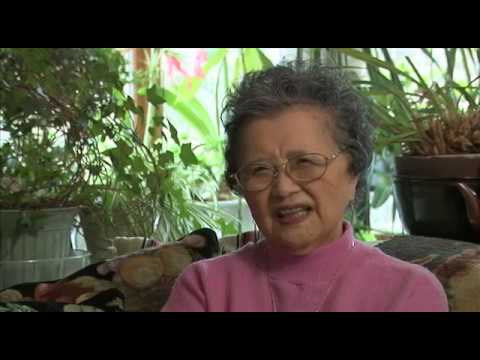Getting renter out, looking over shoulder – Kay Nakao (OH0023)
Transcript
Kay Nakao: My parents came home first. And when they came home, the renter will not move out. She would just not budge. And, of course, Mom and Dad are not able to speak English well enough to have her move along. So they came home and they lived in the basement and on the, the farmhouse, we had the outdoor access to the basement. So that’s where they lived, in the basement, trying to get her out, but she wouldn’t budge. So Dad started cooking up lots of stuff, you know, when you cook fish in soy sauce, in those days, nobody liked teriyaki sauce, but now they all love it? Well, they cooked, kept cooking stuff like that all the time, and I guess it got pretty bad. ‘Cause you know how all the, everything rises, and she finally left without any problem, no arguments or anything. She says, I think she said, “This is it; can’t take it anymore.” [Laughs] So no problem.
Well, the farm was just shot, but it was a different person taking care of the farm, my folks’ farm. But Sam’s farm, he let the manager know that we were coming back, but he became very difficult about turning it back to us. So we thought, well, instead of having problems, ill feelings and trouble later, let’s just sell out. So that’s what he did, sold. And we were out of farming — no more farming. So we came home, we picked up his mom and dad, and the five of us drove home on the car that my brother left us when he went in the service. And then we came home and stayed with my parents until we were able to find a place to buy or rent. And we really looked around a lot, but we couldn’t find a place big enough for all of us, you know, Sam and I and Bruce, and then his mother and dad. But eventually we did find a place. Took a lot of patience and looking around.
Interviewer: And so what was the mood like when you returned to Bainbridge Island? What were the, what was it like to get reacquainted with friends?
Kay Nakao: You know, we kind of, kind of kept quiet. I don’t know why, I just kept looking over my shoulder. I don’t know why I did that. Not that anybody threatened us or anything, but something in me just made me want to always look over my shoulder, make sure that everything’s okay. And I had no reason to do that, but I did that. And I remember so well doing it. But they were just wonderful. Let’s see, we came back in 1945, and in 1948, we organized our orthopedic group, the Nisei group, and then we all intermingled with the Caucasians and everybody else, and everything went well. Yeah, it was almost like we didn’t have a war, or that we weren’t gone. Everything was just fine, and everything’s been fine ever since. And have to say, Bainbridge Island is a wonderful place to live, I tell you.





